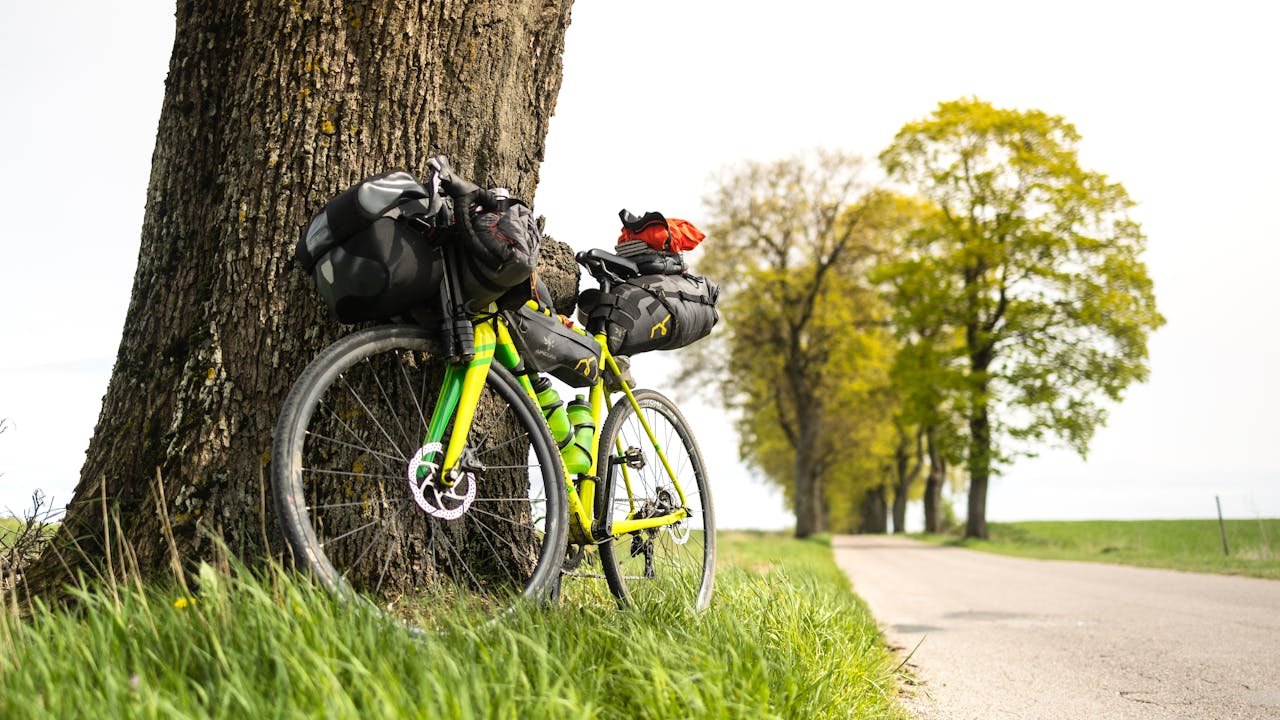Eco-Friendly Travel Tips for Sustainable Adventures
 Looking for eco-friendly travel tips that actually make a difference? These practical strategies will help you reduce your environmental impact while exploring the world, support local communities, and make conscious choices, so your adventures leave a positive mark wherever you go.
Looking for eco-friendly travel tips that actually make a difference? These practical strategies will help you reduce your environmental impact while exploring the world, support local communities, and make conscious choices, so your adventures leave a positive mark wherever you go.
As climate change and overtourism become global concerns, travelers increasingly seek greener, more responsible ways to explore. From booking eco-conscious accommodations to minimizing waste and offsetting carbon emissions, sustainable travel isn’t just a trend—it’s a movement redefining how we experience the world.
Why Eco-Friendly Travel Matters
Travel is transformative, but it also has a footprint. Flights contribute to carbon emissions, single-use plastics pile up in landfills, and popular destinations suffer from overcrowding. According to the UN World Tourism Organization, the tourism industry accounts for approximately 8% of global greenhouse gas emissions.
Choosing eco-friendly travel practices helps:
- Reduce your environmental footprint
- Protect natural habitats and wildlife.
- Support local economies and communities.
- Preserve cultural heritage and sacred sites.
- Ensure tourism remains sustainable for future generations.
Pre-Trip Planning: Start Green Before You Go

Eco-friendly travel doesn’t begin at your destination; it starts when you begin planning. Your pre-trip choices lay the foundation for how green your entire adventure will be. From booking smarter flights to packing thoughtfully, here’s how to build sustainability into your travel before leaving home.
1. Choose Direct Flights and Offset Carbon Emissions
Air travel can account for up to 80% of your trip’s carbon footprint, especially for long-haul flights. While flying may be necessary in many cases, there are innovative ways to reduce the impact:
- Book non-stop flights. Takeoffs and landings burn the most fuel, so a direct route is always greener than one with multiple layovers—even if it costs a bit more.
- Fly economy class. Yes, it’s less spacious, but the carbon footprint per person is significantly lower than business or first class because more people are transported per unit of fuel.
- Offset your emissions. Use trusted carbon offset programs that reinvest your footprint into planet-healing projects. These include:
- Cool Effect – Invests in vetted carbon reduction projects.
- Gold Standard – Focuses on climate and sustainable development.
- Sustainable Travel International Calculator – lets you calculate and offset travel emissions directly.
How it helps: Offsets fund clean cookstoves, renewable energy installations, reforestation efforts, and more, making your trip part of a global solution.
Tip: Some airlines like KLM, Delta, and Lufthansa allow you to purchase offsets directly during booking—super convenient!
2. Research Eco-Certified Accommodations
Where you stay matters; accommodations can be significant energy, water, and plastic consumers, but an increasing number of properties now prioritize sustainability.
What to look for:
- Properties certified by third-party organizations like:
- Green Key – Focuses on eco-friendly hotel operations.
- EarthCheck – Verifies environmental and social sustainability standards.
- LEED (Leadership in Energy and Environmental Design) – For buildings with green design and construction.
- GSTC (Global Sustainable Tourism Council) – Ensures holistic sustainable practices.
Tip: Booking platforms like BookDifferent, EcoHotels.com, and Kind Traveler let you filter by sustainable lodging options, making it easier to choose green.
3. Pack Light and Smart
Packing isn’t just about convenience—it’s a sustainability strategy. Lighter luggage reduces aircraft fuel consumption and allows for more efficient travel.
Here’s how to make your packing planet-friendly:
Travel Essentials:
- Use a reusable water bottle (with a built-in filter, like LifeStraw or GRAYL) to avoid single-use plastic bottles and stay hydrated anywhere, even where tap water isn’t safe.
- Reusable utensils and bamboo cutlery: For takeout, street food, or snacks on the go.
- Collapsible travel mug or silicone coffee cup: Great for cafés, flights, or camping.t
- Reusable shopping bag or tote: Handy for groceries, markets, or unexpected purchases.
Toiletries:
- Solid toiletries: Shampoo bars, conditioner bars, and toothpaste tablets are TSA-friendly and plastic-free.
- Plastic-free deodorant and razor: Opt for refillable or biodegradable options.
- Silicone toiletry bottles: For any liquid products you do bring.
Bonus: Packing items with multiple uses—like sarongs (as towels, beach wraps, or scarves)—reduces bulk and increases versatility.
Getting Around: Green Transportation on the Go

4. Use Public Transportation, Bikes, and Trains
Whenever possible, skip the rental car and opt for:
- Trains for scenic, low-emission travel between cities
- Bicycles or e-scooters for short distances
- Public transit for an authentic local experience
Not only is it better for the planet, but you’ll also save money and reduce stress.
5. Walk More and Explore Slower
Walking allows you to deeply engage with a destination—its smells, sounds, and subtle details—and produces zero emissions.
Slow travel reduces the urge to “do it all” and lets you form meaningful connections with people and places. Consider staying longer in one region instead of flying between multiple cities.
Conscious Choices While Traveling

6. Support Local Businesses and Artisans
Skip big chains and seek out:
- Family-owned restaurants serving local dishes
- Fair-trade shops and local markets for souvenirs
- Cultural experiences hosted by locals, such as cooking classes or heritage walks
This ensures your money supports the community directly and keeps cultural traditions alive.
7. Respect Wildlife and Natural Areas
Be a responsible nature lover:
- Never ride, feed, or take selfies with wild animals
- Avoid unethical attractions like elephant rides or tiger petting zoos.
- Follow the “leave no trace” principle—don’t litter, pick plants, or go off-trail
- Use reef-safe sunscreen when swimming or snorkeling.
Reduce Waste and Pollution

8. Say No to Single-Use Plastics
Carry your own:
- Straw
- Utensils
- Water bottle
- Tote bag
Many countries are banning plastic bags, so it’s a win-win.
9. Dispose of Waste Properly
In places without proper recycling, minimize what you bring in. If you create trash, pack it out with you. Some eco-conscious travelers even use portable trash bags for hikes and beach visits.
10. Conserve Energy and Water
Even on vacation, be mindful:
- Turn off lights, AC, and electronics when leaving your hotel room
- Reuse towels and sheets instead of requesting daily cleaning.
- Take shorter showers and turn off taps while brushing your teeth.
Long-Term Sustainability Habits
11. Advocate for Eco-Friendly Travel
Share your experiences. Post reviews of sustainable stays, share tips on social media, and educate others about responsible travel. Tag hotels, tours, and destinations doing it right—it creates visibility and demand for greener practices.
12. Travel Less, But Better
Instead of 10 short trips, consider two meaningful ones per year. This will reduce carbon emissions and allow for richer, more immersive experiences.
Final Thoughts
You don’t have to be perfect to make an impact. Even small eco-friendly travel tips—like carrying a reusable water bottle or dining at locally owned eateries—can add up when practiced by many. By embracing eco-friendly travel habits, you become part of a global movement that protects the planet while allowing you to experience its beauty, culture, and wonder responsibly.
FAQs
What does eco-friendly travel mean?
Eco-friendly tourism, also known as green travel or planet-friendly travelling, is an effort to make choices that will have a minimal negative impact on communities and ecosystems. This type of tourism promotes respect for other cultures and conservation efforts.
What is the most eco-friendly way of travel?
The most environmentally friendly way to travel is by train. Even if they are electric, trains emit less carbon dioxide than other modes of transport.
How to make travel eco-friendly?
Reducing travel distance and using more sustainable transport methods is best. You can also choose not to travel at all by walking, biking, or sailing instead.
How to be a green traveller?
- Greener transportation is the way to go.
- Choose carbon offset programs.
- Enjoy sustainable places to hang out.
- Consider community impact.
- Invest in products that are reusable and do not require packaging.
- Choose green accommodation.
- Travel green and enjoy your travels.
What is the most efficient way to travel?
The most efficient way to travel is by bicycle. No other creature uses so little energy in relation to the distance travelled. Bicycles convert around 90% of their effort into forward kinetic power.







